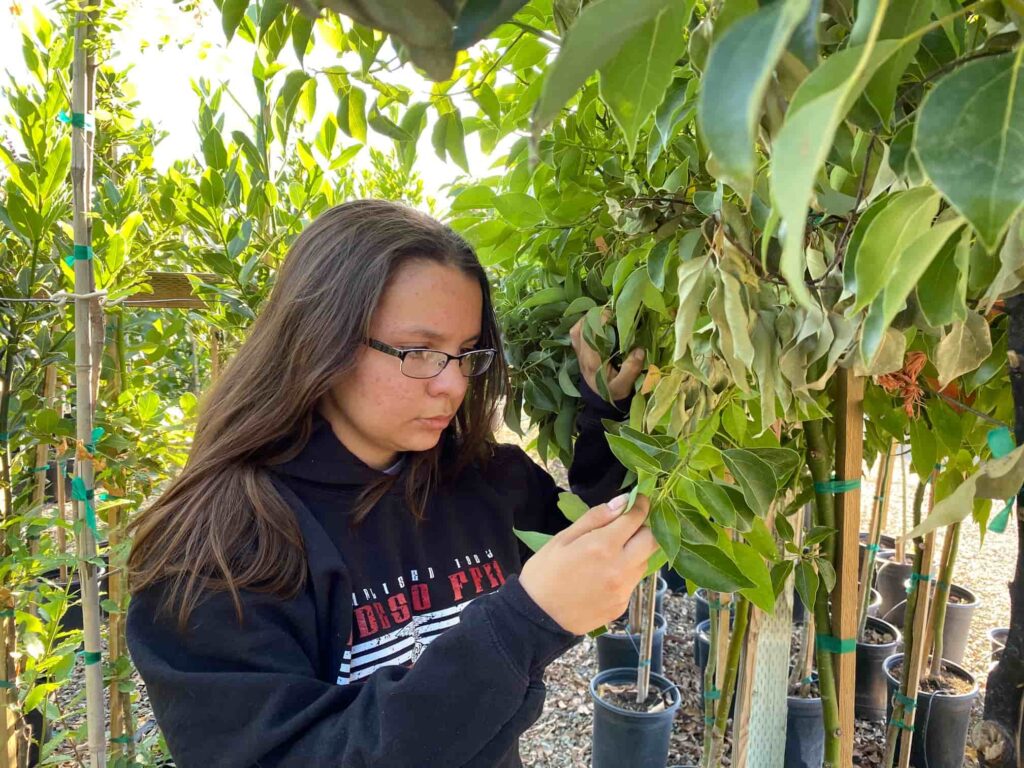Finances in a Placement Supervised Agricultural Experience (SAE)” refers to managing money during an agricultural job where students work under supervision. This includes tracking earnings, expenses, and understanding how money flows in the agricultural business, helping students build skills for future careers.
Discover the key to success in your agricultural placement—learn how managing finances can set you apart in the industry!
What does Finances in a Placement Supervised Agricultural Experience (SAE) mean?
Finances in a Placement Supervised Agricultural Experience (SAE) refer to managing the money-related tasks during an agricultural placement. This includes keeping track of your income, work hours, and any expenses you might have, like transportation or work-related costs.
Through this experience, students learn important skills like budgeting and cost management. These skills are useful for their future careers in agriculture and help them understand how money flows in a real business setting. A supervised agricultural experience mean gaining practical knowledge in managing financial aspects, which provides a solid foundation for success in the agricultural industry.
Why Finances Are Important in a Placement SAE – Start Managing Your Finances Now!

- Real-world financial experience: Students learn how to manage money by tracking income, expenses, and work hours, which mirrors how businesses operate.
- Career readiness: Financial management skills are crucial for future roles in agriculture or any other industry.
- Smarter decision-making: Learning how to manage finances helps students make informed choices, both in their placement and in personal finance.
- Personal accountability: Managing finances teaches students responsibility and goal-setting, which are valuable traits for any future career.
Essential Financial Records to Maintain During Your Placement SAE
During your Placement SAE, it’s important to keep track of key financial records. These include work hours and earnings, so you know how much you’ve worked and earned. Additionally, keep track of any expenses related to your placement, such as transportation, work clothes, or meals.
Another important record is a timesheet or log to track your daily hours and tasks. You should also record any productivity metrics, like the amount of work done, to show your contributions. Finally, if you manage a budget, keep track of spending and any cost-saving opportunities to help you better understand financial management.
Read: Carlos Monzon Finance – Mastering Equity & Financial Advisory!
How to Track Hours and Earnings Effectively in an SAE – Start Tracking Today!

- Use a timesheet: Record your start and end times each day to ensure accurate tracking of work hours. This can be done manually or with digital tools like apps or spreadsheets.
- Track earnings: Calculate your earnings based on the hours worked and your wage rate. Keep a record of any bonuses or additional compensation received.
- Set reminders: Use reminders to log hours daily, ensuring no work time is missed. This will help keep your records consistent and up-to-date.
- Use digital tools: Apps like Clockify or Toggl make it easier to track hours and earnings on your phone or computer, allowing for quick updates and access.
What are some budgeting and cost-saving tips for SAE projects?
Budgeting Tips
- Track All Expenses: Keep a record of every purchase, no matter how small, to stay within your budget. For example, track costs like fuel for transportation, equipment rentals, or supplies.
- Plan Ahead: Create a detailed budget that includes expected costs for materials, labor, and other necessities. Stick to it to prevent overspending.
- Prioritize Needs: Focus on purchasing essential items first, such as seeds, feed, or protective gear, and avoid unnecessary expenditures that could affect your budget.
Cost-Saving Strategies
- Buy in Bulk: Purchase supplies like seeds, feed, or materials in bulk to reduce per-unit costs. For instance, buying larger quantities of feed or tools can save money in the long run.
- Reuse Materials: Recycle or repurpose materials, such as old containers or farm equipment, to reduce the need for new purchases.
- Look for Discounts: Take advantage of student discounts or seasonal sales on items like fertilizers, equipment, or protective gear to cut costs.
- Maintain Equipment: Regularly service tools and equipment to avoid expensive repairs or replacements. A small investment in maintenance can save you money in the long term.
Read: In-House Financing Near Me – Top Deals and Tips for Easy Approval!
How should you document expenses during your SAE placement?

During your Placement SAE, it’s important to track any expenses you have. This includes costs like transportation, whether it’s for gas or public transport, and work-related purchases such as uniforms or supplies. Keep receipts for these expenses so you can easily document them.
You can use apps like Expensify or Mint to help track your costs. It’s also helpful to create a monthly summary to see where your money is going and identify any areas where you can save. This will give you a better understanding of your finances during the placement.
How can you budget personally and for your SAE in agriculture?
- Ask your supervisor about the budgeting process: Understand how money is allocated for different areas like supplies, labor, and equipment in the business.
- Learn budget allocation: Get familiar with how the business divides its finances to manage production costs and revenue effectively.
- Practice managing your own budget: Handle a small project or task’s budget to develop skills in tracking income and expenses.
- Track income and expenses: Record all financial data to understand how money flows and what impacts profits.
- Make cost-saving decisions: Learn to identify areas where savings can be made, helping both the business and your personal financial growth.
- Apply budgeting skills to your future: Use the skills learned to manage personal finances and enhance your career prospects in agriculture.
Understanding Productivity Metrics in a Placement SAE – Track Your Progress Now!

Understanding productivity metrics in your Placement SAE helps you track how much work you complete and its impact. For example, you can measure how many crops you harvest or how many sales you make to see your contribution to the business.
By setting clear goals and comparing your output to the time spent, you can improve efficiency. Tracking these metrics also helps you grow professionally, highlighting strengths and areas for improvement, while showing how your work affects the business’s financial success.
Read: Kia Finance – Best Rates And Deals!
What are some SAE project examples and how to manage finances for each – Start your project!
Here are some examples of Supervised Agricultural Experience (SAE) projects:
- Crop Production: Growing and managing crops like vegetables, fruits, or grains.
- Livestock Management: Caring for and raising animals such as cows, chickens, or pigs.
- Agricultural Sales: Selling products like plants, eggs, or homemade goods at markets.
- Agricultural Mechanics: Repairing and maintaining farm equipment or machinery.
- Agri-Business: Running a small farm stand or business related to agriculture, like selling farm-fresh produce.
- Environmental Stewardship: Implementing sustainable practices in farming, such as water conservation or soil health management.
How does financial management fit into your SAE program? – Learn More!

Financial management is key to your SAE program because it helps you keep track of income and expenses. By creating a budget, you can plan how to spend money on necessary supplies, equipment, or materials without overspending. Tracking your expenses also helps you see where your money is going and find areas where you can save or adjust.
Managing finances also helps you make better decisions about your project, like whether to invest in new equipment or hire extra help. It teaches you valuable skills that will help in future agricultural projects or careers, ensuring you’re responsible with money and prepared for success.
Steps to Initiate a Supervised Agricultural Experience (SAE):
- Identify Your Interest: Choose an area of agriculture that interests you, such as crop production, livestock care, or agribusiness.
- Set Clear Goals: Define what you want to achieve from your SAE, such as learning specific skills or completing a particular project.
- Find a Mentor: Look for a supervisor or mentor, such as a teacher, farm owner, or industry professional, who can guide you throughout the experience.
- Create a Plan: Develop a plan for your SAE, including tasks, timelines, and resources needed to complete the project successfully.
- Track Progress: Keep detailed records of your activities, including work hours, expenses, and outcomes, to monitor your progress.
- Reflect and Improve: Regularly assess your performance, make improvements, and use your experience to set future goals.
The time in a placement supervised agricultural experience is an invaluable opportunity to gain hands-on knowledge and skills. It helps you grow as a professional and prepares you for a successful career in agriculture by applying real-world experiences to your learning.
Read: Thruster Finance – Your Go-To Blast-Native DEX!
How an SAE Program Can Prepare You for a Career in Agriculture

An SAE program helps prepare you for a career in agriculture by providing hands-on experience in real-world agricultural tasks. Whether you’re working with crops, animals, or managing a farm, you’ll gain practical knowledge that’s valuable in any agriculture job.
The program also helps you develop important skills like time management, problem-solving, and financial management. By completing an SAE, you can build a strong resume, network with industry professionals, and explore different career paths in agriculture.
How to Decide on Your Future SAE Program – Make Your Choice Today!
- Assess Your Interests: Think about what excites you in agriculture—whether it’s working with animals, growing crops, or managing a farm. Your passion will make the experience more enjoyable and meaningful.
- Consider Your Goals: Determine what you want to gain from your SAE. Do you want to develop specific skills, explore a career path, or earn money? Your goals will guide your decision.
- Evaluate Available Resources: Consider the resources you have access to, such as mentors, land, equipment, or financial support, as they will impact the type of project you can pursue.
- Research Opportunities: Look into different SAE options in your area or within your community. Talk to others who have done similar projects to get insight into what works best for you.
- Plan for Long-Term Growth: Choose a project that not only fits your interests but also helps build skills and experiences that will benefit you in your future career in agriculture.
Read: Nebula Financing – Fast Approval & No Collateral!
Exploratory SAE Projects – Financial Requirements!
Exploratory SAE projects let students explore different areas of agriculture, but they come with financial needs. You’ll need money for initial costs like purchasing supplies, tools, or materials such as seeds and equipment, and for ongoing expenses like animal feed or equipment maintenance.
It’s important to track all expenses to stay within budget and understand the financial side of your project. You can also look for funding sources like grants, scholarships, or support from family or mentors to help cover costs and keep your project running smoothly.
The Benefits of Participating in an SAE – Discover Them Now!

- Hands-On Experience: You gain real-world experience in agriculture, which helps you understand how things work in the industry.
- Skill Development: It helps you develop important skills such as problem-solving, time management, and financial management, which are valuable in any career.
- Career Exploration: An SAE allows you to explore different career paths in agriculture, helping you discover what interests you the most.
- Networking Opportunities: You can connect with mentors, industry professionals, and potential employers, opening doors for future opportunities.
- Strong Resume: Completing an SAE shows commitment and helps you stand out when applying for jobs, internships, or college programs.
Read: Driveway Finance – Transform Your Home Without Upfront Cost!
what should financial records in an SAE project track?
- Income: Any earnings generated from the project, such as sales of crops, livestock, or other agricultural products.
- Expenses: Costs incurred during the project, including materials, equipment, transportation, and labor.
- Work Hours: The time spent on various tasks to monitor productivity and efficiency.
- Assets and Inventory: Items owned or used in the project, like tools, livestock, or supplies.
- Profit and Loss: A summary of financial performance to evaluate the success of the project.
Accurate tracking helps students understand budgeting, improve decision-making, and learn real-world financial management skills.
Frequently Asked Questions:
Do I need funding for my SAE project?
Yes, you may need money for supplies, equipment, or ongoing expenses like feed or tools. You can also look for grants, scholarships, or financial support from mentors or family members.
Can I choose any area of agriculture for my SAE?
Yes, you can choose an area that interests you, such as crop production, animal care, agribusiness, or environmental practices, as long as it fits the learning goals.
What does supervised agricultural experience mean?
A supervised agricultural experience mean hands-on learning in agriculture, where students gain practical skills through activities like crop production, livestock care, or agribusiness projects under the guidance of a mentor.
What is an example of a placement supervised agricultural experience?
An example of a placement supervised agricultural experience is working on a farm, helping with tasks like planting crops or caring for animals. The student learns under the guidance of a supervisor, gaining valuable hands-on experience in agriculture.
what is a placement SAE?
A Placement SAE is when students work for an agriculture-related business or organization, gaining hands-on experience through tasks like caring for animals, managing crops, or helping with agribusiness while learning job skills, understanding workplace responsibilities, and building connections in the agriculture field.
What are some supervised agricultural experience ideas?
Supervised Agricultural Experience (SAE) ideas include working on a farm, managing crops or livestock, or running an agricultural business. These experiences help students gain hands-on knowledge in various areas of agriculture and build valuable career skills.
What skills will I develop in an SAE?
Through an SAE, you’ll develop skills such as problem-solving, time management, financial planning, communication, and leadership, all valuable in agriculture and other careers.
What does a supervised agricultural experience provide?
A supervised agricultural experience provides hands-on learning in agriculture, helping students develop skills in areas like crop production, livestock care, and farm management under the guidance of a supervisor.
How do I find a mentor for my SAE?
You can find a mentor through your school, local farms, or agricultural organizations. A mentor could be a teacher, farm owner, or industry professional.
Do SAE projects count toward college or job applications?
Yes, completing an SAE can strengthen your resume and make you stand out when applying for jobs or college programs, as it demonstrates practical skills and commitment.
Conclusion:
Managing finances in a placement SAE is key to understanding how agricultural businesses work. By tracking income, expenses, and work hours, you develop important financial skills that are useful in any career. This experience also makes you stand out to employers and colleges, showing that you’re responsible and ready for the next step. The financial skills you learn during your SAE will help you grow professionally and personally in the future.


Leave a Reply